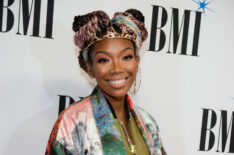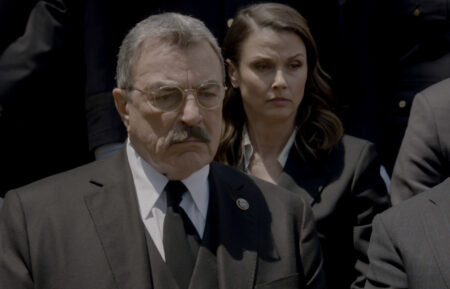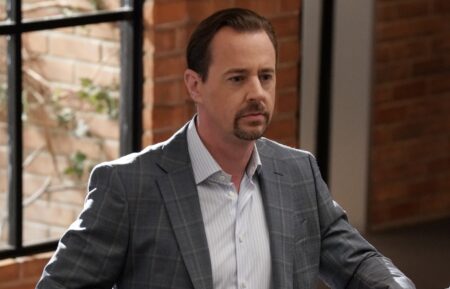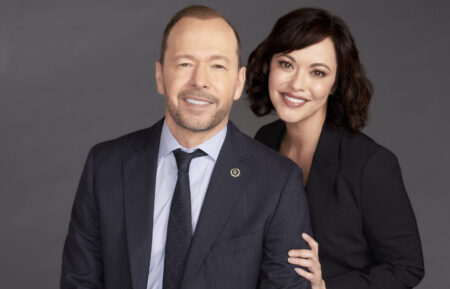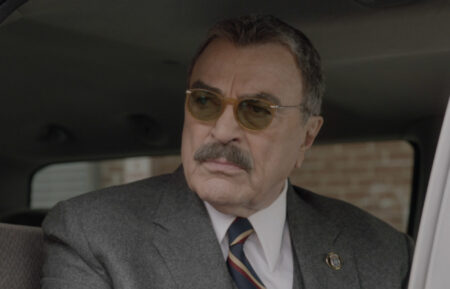10 Fun Facts About ‘Rodgers & Hammerstein’s Cinderella,’ Now 25 Years Old
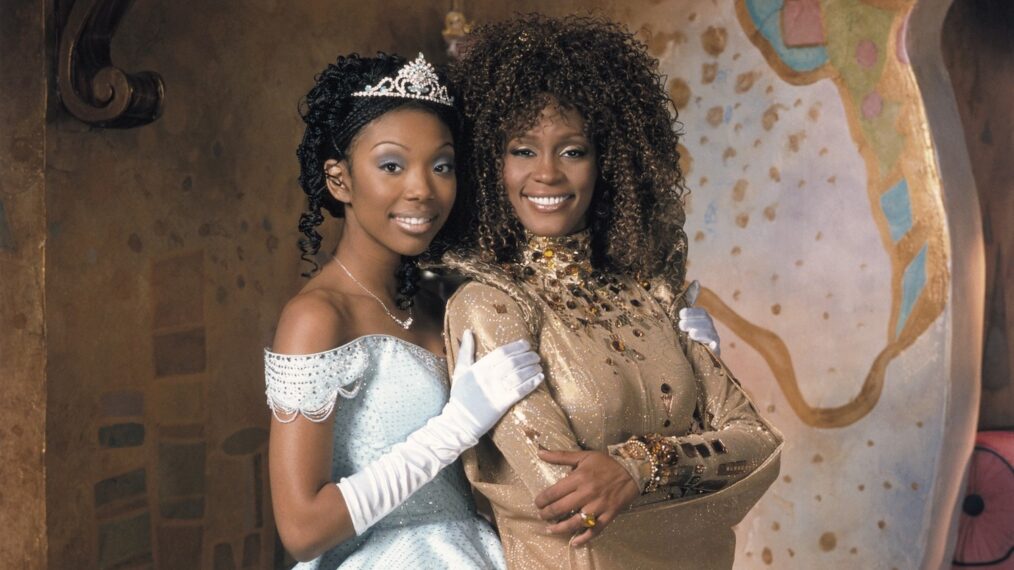
The 1997 TV movie Rodgers & Hammerstein’s Cinderella was a fairy tale for its cast, especially Brandy, who has said that playing Cinderella was a dream come true. The then-18-year-old also made history as the first Black actress to portray the character onscreen.
But the movie was also a fairy tale for ABC and Walt Disney Television, pulling in an estimated 60 million viewers and earning ABC’s best timeslot ratings in 13 years. Later, the home-video release of Cinderella moved 1 million units in a week. The narrative around Cinderella soon changed: Once known as one of the most expensive movies in the history of television, with a budget of $12 million, Cinderella now ranks as one the most profitable TV movies of its time, per the Los Angeles Times.
With a script by Robert Freedman and direction by Robert Iscove — and a cast that included Whitney Houston as the Fairy Godmother, Whoopi Goldberg as Queen Constantina, and Victor Garber as King Maximilian — Cinderella gave new life to the 1957 musical by Richard Rodgers and Oscar Hammerstein II. But it also taught a new generation of Disney fans that the impossible is possible.
So, before the clock strikes midnight, read on for some fun facts about the production, which premiered 25 years ago on November 2, 1997.
Whitney Houston was originally going to play Cinderella.
In 1993, producers Craig Zadan, Neil Meron, and Debra Martin Chase got Houston on board to produce the movie and to star as Cinderella. But because of production delays and the singer’s busy schedule, it was 1997 before filming began, and by then Houston opted to play the Fairy Godmother instead.
“Yes, I was supposed to be Cinderella,” Houston told Jet in 1997. “But after you get married and have a baby, it’s like, ‘I’m not feeling quite like Cinderella.’ Although I love the wonder and the innocence, I could’ve very well portrayed Cinderella, but it would’ve taken a lot of reaching.”
A Disney executive proposed casting Jewel as Cinderella.
Zadan told Shondaland.com that one Disney executive was nervous about the idea of a Black Cinderella and suggested that Jewel play the part instead. “I think he was saying to himself, ‘Who’s a white version of Brandy?’” Zadan added. “We said absolutely not. The whole point of this whole thing was to have a Black Cinderella. … People were clearly still thinking, ‘Multicultural is one thing, but do we have to have two Black leads?’”
Whitney Houston and Brandy were friends before the latter landed the Cinderella part.
As Zadan told Variety in 1997, he found out that Houston and Brandy were friends when he proposed casting the latter actress as Cinderella. “It turned out they were close friends, and [Houston] called her right there and said, ‘Hi, this is your fairy godmother,’” the producer recalled. “Brandy was beside herself.”
“I was so excited, I screamed,” Brandy told the publication. “When she told me that she was the Fairy Godmother, I thought, oh my God, I finally get to work with Whitney. I feel very blessed and absolutely thrilled.”
Screenwriter Robert Freedman worked to make Cinderella “an independent woman.”
Meron told Shondaland.com that he and his collaborators — including Freedman — made sure that their version of Cinderella “was defined by more than falling in love with a handsome prince.”
“She needed to have a story of her own that superseded just being attracted to his good looks,” Meron added. “That’s not the way that the culture was going at that time. Robert was able to give her a little bit more of a backbone and have her be an independent woman.”
Added Freedman, “I was particularly sensitive to not telling a story of ‘she’s just waiting for the prince or the white knight on the white horse to come and take her away.’”
White actresses didn’t want to play the evil stepmother.
Before Bernadette Peters agreed to play the evil stepmother, producers struggled to find an actor willing to take the part. Bette Midler, whose 1993 TV version of Gypsy helped the Cinderella project get off the ground, was one of the thespians who said no.
“I cannot emphasize enough what a bitch it was to cast this role,” Chase told Shondaland.com. “No white actress wanted to be seen as being mean to the Black Cinderella.”
Peters said, “I don’t remember if I thought about the optics of playing a white evil stepmother to a Black Cinderella. We weren’t really playing ‘real’ people — it’s a fairy tale, and I just wanted to play the role as best as I could, as cruelly as I could. I think that’s how we all approached it.”
Jason Alexander took a role in a bid to play Sweeney Todd later.
Seinfeld star Jason Alexander told The New York Times that he took on the role of valet Lionel in Cinderella in part because he wanted musicals to have a future and in part because he wanted to play the lead role in a film adaptation of the Stephen Sondheim musical Sweeney Todd: The Demon Barber of Fleet Street, the rights to which Zadan and Meron owned. (Johnny Depp eventually took that role when the musical hit the big screen in 2007.)
Taye Diggs and Wayne Brady both auditioned to play the prince.
Prince Christopher portrayer Paolo Montalban was the last actor cast in the production, as Meron told Shondaland.com.
“It was like we had the glass shoe that we were trying to fit for the Prince,” Chase recalled. “We held auditions in L.A. and we saw everybody from Wayne Brady to Antonio Sabato, Jr. It was a huge deal. We just didn’t find the person in L.A., so we went to N.Y. Taye Diggs even came in in New York, and there was a lot of anticipation because of Rent.”
“I believe we even saw a young Marc Anthony as well,” Meron added.
The soundtrack includes songs from Rodgers and Hammerstein’s other musicals.
As the Rodgers & Hammerstein Organization’s website noted in 1997, producers pulled in numbers from other works by the Broadway duo.
Cinderella and Prince Christopher’s duet “The Sweetest Sounds,” for instance, came from Rodgers’ 1962 musical No Strings.
The stepmother’s song, “Falling in Love With Love,” came from 1938 musical The Boys from Syracuse, on which Rodgers collaborated with lyricist Lorenz Hart.
And for the Fairy Godmother, they found “There’s Music in You,” a song that Rodgers and Hammerstein compose onscreen in the 1953 film Main Street to Broadway. (“So here it is,” Ted Chapin, then the president of the Rodgers & Hammerstein Organization, said on the website. “Whitney Houston’s latest ballad, written by Rodgers and Hammerstein … It took 45 years, but talk about your happy endings!”)
Whoopi Goldberg wore millions of dollars of jewelry as the Queen.
As she prepared to play Queen Constantina, Goldberg ditched the rhinestones chosen by the production’s wardrobe designers and contacted jeweler-to-the-stars Harry Winston to lend her the real stuff, including a $2.5-million necklace and a $9-million, 70-carat diamond ring, according to People. (“I wanted real jewels!” Goldberg told Shondaland.com with a laugh. “And I was friends with the folks over at Harry Winston, so why not?”) The company sent the gems to the set, along with three armed guards.
That’s not Brandy’s foot slipping into the glass slipper.
Brandy had a foot double for the pivotal scene in which Prince Christopher identifies Cinderella via glass slipper. “Those were not my feet, because I wear a size 9, and a 9 on television looks like maybe a 12,” Brandy divulged in this year’s Cinderella: The Reunion.
Rodgers & Hammerstein’s Cinderella, Now Streaming, Disney+

